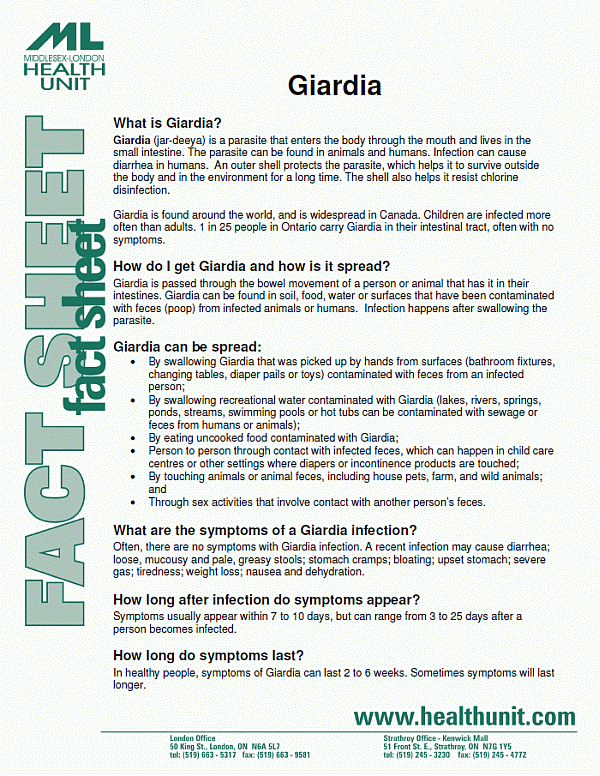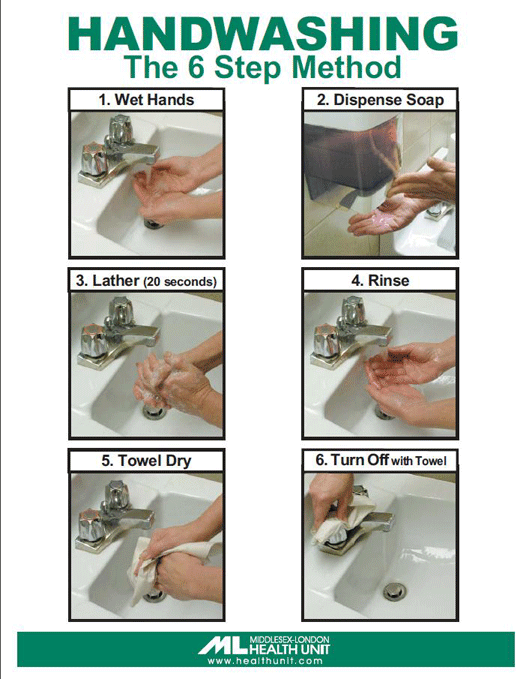Contact Us
For more information, please contact the Infectious Disease Control Team:
- 519-663-5317 Ext. 2330
What is giardia? Giardia (jar-deeya) is a parasite that enters the body through the mouth and lives in the small intestine of people and animals. Swallowing the parasite can cause symptoms like diarrhea in some people or no symptoms at all. An outer shell protects the parasite, which helps it to survive outside the body and in the environment for a long time. The shell also helps it resist chlorine disinfection. Giardia is found around the world, and is widespread in Canada.
 Giardia Fact Sheet (PDF 77KB)
Giardia Fact Sheet (PDF 77KB)For more information, please contact the Infectious Disease Control Team:
Giardia is passed through the bowel movement of a person or animal that has it in their intestines. Giardia can be found in soil, food, water or surfaces that have been contaminated with feces (poop) from infected animals or humans. Infection happens after swallowing the parasite.
Giardia can be spread:
Often, there are no symptoms with Giardia infection. A recent infection may cause diarrhea; loose, mucousy and pale, greasy stools; stomach cramps; bloating; upset stomach; severe gas; tiredness; weight loss; nausea and dehydration.
Symptoms usually appear within 7 to 10 days, but can range from 3 to 25 days after a person becomes infected.
In healthy people, symptoms of Giardia can last 2 to 6 weeks. Sometimes symptoms will last longer. Often symptoms will disappear on their own and in some cases medication is needed to treat the infection.
Everyone is at risk for getting Giardia. People most likely to become infected include:
 The 6 Step Method of Handwashing (PDF 96KB)
The 6 Step Method of Handwashing (PDF 96KB)